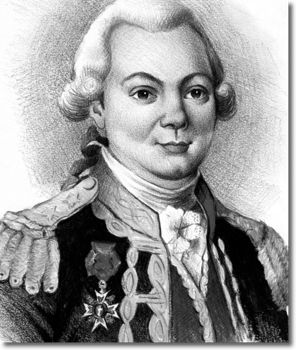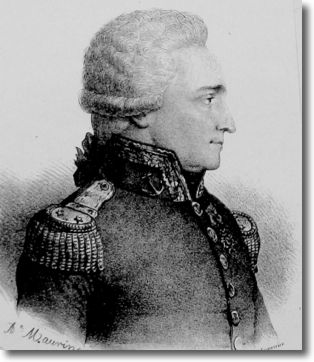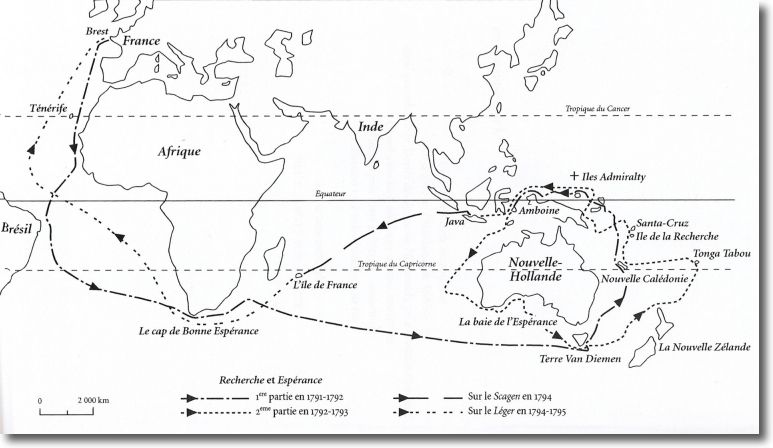We know well, today, The fate of the expedition of the captain of the ship Jean-François de La Pérouse, lost with all hands in the Solomon Islands in 1788. What we know much less well, on the other hand, This is the story of the Admiral Antoine de Bruni d'Entrecasteaux gone for his search in 1791 at the request of Louis XVI, and whose fate was scarcely more enviable.
It is about this unknown expedition Jean-Pierre Ledru wrote, in the pictorial language of the sailors of the time, Through the eyes of a Norman "pilotin" embarked for better or for worse (¹).
Historical background : The disappearance of La Pérouse
In August 1785, Jean-François de Lapérouse left the port of Brest, commissioned by Louis XVI to lead a prestigious expedition of discovery intended to complete Cook's three voyages. For more than three years, the two ships of the expedition, the Boussole and theAstrolabe, will travel all the oceans of the globe, in all latitudes and in all weathers. La Pérouse had announced in his last letter what his course was to be and the probable time of his return, towards summer 1789. But after leaving New Holland (Present-day Australia) No more news. The king's two ships disappear in the vastness of the South Pacific, and the Revolution breaks out in France.
We know, now, the place where the two La Perouse's ships capsized, on Vanikoro island in the Solomon Islands. For more than thirty years, Salomon Association in New Caledonia began searches and excavations, most recently in 2008, in order to unravel the mystery of the shipwreck, and several films have been made on this research. (²)
Bruni d'Entrecasteaux expedition
 With no news since their last cast off 10 th 1788, the Constituent Assembly decreed the 28 February 1790 that a bonus would be granted to any sailor giving news of La Pérouse. The king mandated Rear-Admiral Bruni d'Entrecasteaux to set up a new expedition, with the main mission of searching for La Pérouse.
With no news since their last cast off 10 th 1788, the Constituent Assembly decreed the 28 February 1790 that a bonus would be granted to any sailor giving news of La Pérouse. The king mandated Rear-Admiral Bruni d'Entrecasteaux to set up a new expedition, with the main mission of searching for La Pérouse.
March, the 28 th 1791, 210 mariners and 12 learned men left Brest, over two 'gabares', or 'fausses fregates' (³), commanded by D'Entrecasteaux : the Search and the’Esperance. It reached New Holland, which it toured in 1792 going up to New Caledonia and then the Admiralty Islands. A second round in 1793 brought the expedition to the vicinity of a new island that d'Entrecasteaux named "Île de La Recherche", but he did not land there. It is on this island, now called Vanikoro, that castaways of the expedition La Perouse had been shipwrecked. The expedition continued on to Surabaya without ever reaching it. The crews were decimated by privation and disease, D'Entrecasteaux died on 23 July 1793, the ships were boarded by the Dutch at war with France and the revolutionaries, and 222 Onboard people, only about twenty returned to Brest on 5 February 1795. Louis XVI had been beheaded in January 1793, and La Pérouse had fallen into oblivion.
Jean-Pierre Ledru, after patient and meticulous historical research, depicts the four years of this tragic expedition through the romanticized character of its main hero, the pilot François Deschamps. He also makes us relive the life and customs of Norman and Breton sailors in this difficult time when French society was changing tack. A fascinating story, written with simplicity by a remarkable scholar.




